Saunders Comprehensive Review for the NCLEX-RN Examination Silvestri 6th Edition Test Bank
$35.00
Name: Saunders Comprehensive Review for the NCLEX-RN Examination
Author: Silvestri
Edition: 6th
ISBN-10: 1455727555
ISBN-13: 978-1455727551
- Description
- Reviews (0)
Description
You will receive this product immediate after placing the order
Saunders Comprehensive Review for the NCLEX-RN Examination
Saunders Comprehensive Review for the NCLEX-RN Examination Silvestri
Saunders Comprehensive Review for the NCLEX-RN Examination Silvestri 6th
Saunders Comprehensive Review for the NCLEX-RN Examination Silvestri 6th Test Bank
Saunders Comprehensive Review for the NCLEX-RN Examination Silvestri 6th Edition Test Bank
***THIS IS NOT THE ACTUAL BOOK. YOU ARE BUYING the Test Bank in e-version of the following book***
Name: Saunders Comprehensive Review for the NCLEX-RN Examination
Author: Silvestri
Edition: 6th
ISBN-10: 1455727555
ISBN-13: 978-1455727551
Type: Test Bank
– The test bank is what most professors use an a reference when making exams for their students, which means there’s a very high chance that you will see a very similar, if not exact the exact, question in the test!
– The file is either in pdf, doc, rtf or zipped in the package and can easily be read on PCs and Macs.
– Delivery is INSTANT. You can download the files IMMEDIATELY once payment is done.
If you have any questions, please feel free to contact us. Our response is the fastest. All questions will always be answered in 6 hours., most of the time within 30mins
We also faced similar difficulities when we were students, and we understand how you feel.
But now, with the Saunders Comprehensive Review for the NCLEX-RN Examination 6th Test Bank, you will be able to
* Anticipate the type of the questions that will appear in your exam.
* Reduces the hassle and stress of your student life.
* Improve your studying and also get a better grade!
* Get prepared for examination questions.
* Can save you time and help you understand the material.
This is the quality of service we are providing and we hope to be your helper.
Delivery is in the next moment. Test Bank is accurate.
Prepare to receive your Saunders Comprehensive Review for the NCLEX-RN Examination 6th Test Bank in the next moment.
ISBN-10: 1455727555
ISBN-13: 978-1455727551
If you have any questions, or would like a receive a sample chapter before your purchase, please contact us at inquiry@testbanksafe.com
Saunders Comprehensive Review for the NCLEX-RN Examination
Saunders Comprehensive Review for the NCLEX-RN Examination Silvestri
Saunders Comprehensive Review for the NCLEX-RN Examination Silvestri 6th
Saunders Comprehensive Review for the NCLEX-RN Examination Silvestri 6th Test Bank
Saunders Comprehensive Review for the NCLEX-RN Examination Silvestri 6th Edition Test Bank
Silvestri: Saunders Comprehensive Review for the NCLEX-RN® Examination, 6th Edition
Child Health
Test Bank
MULTIPLE CHOICE
1. The nurse is caring for an infant with a diagnosis of hydrocephalus and is monitoring the infant for signs of increased intracranial pressure (ICP). The nurse suspects increased ICP if which of the following is noted?
1. Proteinuria
2. Bradycardia
3. A drop in blood pressure
4. A bulging anterior fontanel
ANS: 4
Rationale: An elevated or bulging anterior fontanel indicates an increase in cerebrospinal fluid collection in the cerebral ventricle. Proteinuria, bradycardia, and a drop in blood pressure are not specific signs of increased ICP. Changes in the level of consciousness and a widened pulse pressure are additional signs of increased ICP.
Test-Taking Strategy: Use the principles associated with excessive fluid buildup in the cranial cavity when answering the question. Fluid accumulation in the cranial cavity will exert pressure on the soft brain tissue. This will cause the anterior fontanel to expand. A method of assessing fluid collection in the cranial cavity is to palpate this anterior fontanel. A full or bulging fontanel will indicate increasing amounts of fluid accumulation. Additionally, correlate the strategic word “hydrocephalus” in the question with “anterior fontanel” in “a bulging anterior fontanel,” the correct option. If you had difficulty with this question, review the symptoms associated with hydrocephalus.
PTS: 1
DIF: Level of Cognitive Ability: Analyzing
REF: McKinney, E., James, S., Murray, S., & Ashwill, J. (2009). Maternal-child nursing (3rd ed.). St. Louis: Saunders.
OBJ: Client Needs: Physiological Integrity
TOP: Content Area: Child Health
MSC: Integrated Process: Nursing Process—Assessment
2. The nurse is caring for a child who has sustained a head injury in an automobile accident and is monitoring the child for signs of increased intracranial pressure (ICP). The nurse monitors for the earliest sign of increased ICP by assessing for:
1. Apnea
2. Posturing
3. Tachycardia
4. Changes in level of consciousness (LOC)
ANS: 4
Rationale: An altered level of consciousness is an early sign of increased ICP. Late signs of increased ICP include tachycardia, leading to bradycardia, apnea, systolic hypertension, widening pulse pressure, and posturing.
Test-Taking Strategy: Note the strategic words “earliest sign” in the question. “Apnea” and “posturing” can be eliminated first because they are clearly late signs of increased ICP. Recalling that changes in LOC are an indication of concern in any client will assist in directing you to “changes in level of consciousness (LOC).” Review the early signs of increased ICP if you had difficulty with this question.
PTS: 1
DIF: Level of Cognitive Ability: Applying
REF: McKinney, E., James, S., Murray, S., & Ashwill, J. (2009). Maternal-child nursing (3rd ed.). St. Louis: Saunders.
OBJ: Client Needs: Physiological Integrity
TOP: Content Area: Child Health
MSC: Integrated Process: Nursing Process—Assessment
3. The nurse is providing instructions to the parents of an infant with a ventriculoperitoneal shunt. The nurse includes which of the following instructions?
1. Call the physician if the infant is fussy.
2. Expect an increased urine output from the shunt.
3. Call the physician if the infant has a high-pitched cry.
4. Position the infant on the side of the shunt when the infant is put to bed.
ANS: 3
Rationale: If the shunt is malfunctioning, the fluid from the ventricle part of the brain will not be diverted to the peritoneal cavity. The cerebrospinal fluid will build up in the cranial area. The result is increased intracranial pressure, which then causes a high-pitched cry in the infant. The infant should not be positioned on the side of the shunt because this will cause pressure on the shunt and skin breakdown. This type of shunt affects the gastrointestinal system, not the genitourinary system, and an increased urinary output is not expected. “Call the physician if the infant is fussy” is a concern only if other signs indicative of a complication are occurring.
Test-Taking Strategy: Knowledge about a ventriculoperitoneal shunt is required to answer the question. Remember that a high-pitched cry in an infant indicates a concern or problem. If you had difficulty with this question, review assessment findings and home care instructions for the parents of a child with a shunt.
PTS: 1
DIF: Level of Cognitive Ability: Applying
REF: McKinney, E., James, S., Murray, S., & Ashwill, J. (2009). Maternal-child nursing (3rd ed.). St. Louis: Saunders.
OBJ: Client Needs: Physiological Integrity
TOP: Content Area: Child Health
MSC: Integrated Process: Teaching and Learning
4. The nurse reviews the plan of care for a child with Reye’s syndrome. The nurse prioritizes the nursing interventions included in the plan and prepares to monitor for:
1. Signs of hyperglycemia
2. Signs of a bacterial infection
3. The presence of protein in the urine
4. Signs of increased intracranial pressure
ANS: 4
Rationale: Intracranial pressure and encephalopathy are major symptoms of Reye’s syndrome. Protein is not present in the urine. Reye’s syndrome is related to a history of viral infections, and hypoglycemia is a symptom of this disease.
Test-Taking Strategy: This question asks you to select a priority nursing intervention for the child with Reye’s syndrome. Recalling that Reye’s syndrome is related to a history of viral infection and that hypoglycemia is associated with this syndrome will assist in eliminating “signs of hyperglycemia” and “signs of increased intracranial pressure.” Use prioritizing skills to select “signs of increased intracranial pressure” over “the presence of protein in the urine.” If you had difficulty with this question, review care of the child with Reye’s syndrome.
PTS: 1
DIF: Level of Cognitive Ability: Applying
REF: Perry, S., Hockenberry, M., Lowdermilk, D., & Wilson, D. (2010). Maternal child nursing care (4th ed.). St. Louis: Mosby.
OBJ: Client Needs: Physiological Integrity
TOP: Content Area: Child Health
MSC: Integrated Process: Nursing Process—Planning
5. The nurse is providing home care instructions to the mother of a child who is recovering from Reye’s syndrome. Which of the following home instructions should the nurse provide to the mother?
1. Increase the stimuli in the environment.
2. Give the child frequent small meals, if vomiting occurs.
3. Avoid daytime naps so that the child will sleep at night.
4. Check the child’s skin and eyes every day for a yellow discoloration.
ANS: 4
Rationale: If vomiting occurs in Reye’s syndrome, it is caused by cerebral edema and is a sign of intracranial pressure. Decreasing stimuli and providing rest decrease stress on the brain tissue. Checking for jaundice will assist in identifying the presence of liver complications, which are characteristic of Reye’s syndrome.
Test-Taking Strategy: Read each option carefully, and think about the manifestations and complications associated with Reye’s syndrome. Recalling that increased intracranial pressure is a concern will assist in eliminating “give the child frequent small meals, if vomiting occurs.” Eliminate “increase the stimuli in the environment” and “avoid daytime naps so that the child will sleep at night” because they are comparable or alike in that they do not promote a restful environment for the child. Review care of the child with Reye’s syndrome if you had difficulty with this question.
PTS: 1
DIF: Level of Cognitive Ability: Applying
REF: McKinney, E., James, S., Murray, S., & Ashwill, J. (2009). Maternal-child nursing (3rd ed.). St. Louis: Saunders.
OBJ: Client Needs: Physiological Integrity
TOP: Content Area: Child Health
MSC: Integrated Process: Teaching and Learning
6. The nurse working in the day care center is told that a child with autism will be attending the center. The nurse collaborates with the staff of the day care center and assists in planning activities that will meet the child’s needs. The nurse understands that the priority consideration in planning activities for the child is to ensure:
1. Safety with activities
2. Activities providing verbal stimulation
3. Social interactions with other children in the same age group
4. Familiarity with all activities and providing orientation throughout the activities
ANS: 1
Rationale: Safety with all activities is a priority in planning activities with the child. The child with autism is unable to anticipate danger, has a tendency for self-mutilation, and has sensoriperceptual deficits. Although providing social interactions, verbal communications, and familiarity and orientation are also appropriate interventions, the priority is safety.
Test-Taking Strategy: Use Maslow’s Hierarchy of Needs theory to answer this question. Physiological needs take priority. When a physiological need does not exist, safety needs are the priority. None of the options addresses a physiological need. “Safety with activities” addresses the safety need. “Activities providing verbal stimulation,” “social interactions with other children in the same age group,” and “familiarity with all activities and providing orientation throughout the activities” address psychosocial needs. Review care to the child with autism if you had difficulty with this question.
PTS: 1
DIF: Level of Cognitive Ability: Applying
REF: McKinney, E., James, S., Murray, S., & Ashwill, J. (2009). Maternal-child nursing (3rd ed.). St. Louis: Saunders.
OBJ: Client Needs: Safe and Effective Care Environment
TOP: Content Area: Child Health
MSC: Integrated Process: Nursing Process—Planning
7. The nurse is providing instructions to an adolescent who is taking phenytoin (Dilantin) for the control of seizures. Which of the following statements, if made by the adolescent, indicates a need for further teaching regarding the medication?
1. “The medication may cause oily skin.”
2. “Drinking alcohol may affect the medication.”
3. “If my gums become sore I need to stop the medication.”
4. “Birth control pills may not be effective when I take this medication.”
ANS: 3
Rationale: The adolescent should not stop taking antiseizure medications suddenly or without discussing it with a physician or nurse. Acne or oily skin may be a problem for the adolescent, and the adolescent is advised to call a physician for skin problems. Alcohol will lower the seizure threshold, and it is best to avoid the use of alcohol. Birth control pills may be less effective when the client is taking antiseizure medication.
Test-Taking Strategy: Note the strategic words “need for further teaching.” These words indicate a negative event query and the need to select the incorrect statement. Use general principles related to the administration of medication to assist in answering this question. The adolescent needs to be instructed not to stop the medication suddenly without discussing it with a physician or nurse. Review client teaching points related to the administration of medications if you had difficulty with this question.
PTS: 1
DIF: Level of Cognitive Ability: Evaluating
REF: McKinney, E., James, S., Murray, S., & Ashwill, J. (2009). Maternal-child nursing (3rd ed.). St. Louis: Saunders.
OBJ: Client Needs: Physiological Integrity
TOP: Content Area: Child Health
MSC: Integrated Process: Teaching and Learning
8. The nurse is collecting data on a 7-year-old child who is suspected of having episodes of absence seizures. Which of the following questions to the mother will assist in providing information that will identify the symptoms associated with these types of seizures?
1. “Does twitching occur in the face and neck?”
2. “Does the muscle twitching occur on one side of the body?”
3. “Does the muscle twitching occur on both sides of the body?”
4. “Does the child have a blank expression during these episodes?”
ANS: 4
Rationale: Absence seizures are very brief episodes of altered awareness. There is no muscle activity except eyelid fluttering or twitching. The child has a blank facial expression. These seizures last only 5 to 10 seconds but may occur one after another several times a day. Myoclonic seizures are brief, random contractions of a muscle group that can occur on one or both sides of the body. Simple partial seizures consist of twitching of an extremity, the face, or the neck, or the sensation of twitching or numbness in an extremity, the face, or the neck.
Test-Taking Strategy: Knowledge of the characteristics of the various types of seizures is required to answer this question. Focusing on the type of seizure identified in the question—absence seizures—may assist in directing you to “Does the child have a blank expression during these episodes?” Review the characteristics of the various types of seizures if you had difficulty with this question.
PTS: 1
DIF: Level of Cognitive Ability: Analyzing
REF: McKinney, E., James, S., Murray, S., & Ashwill, J. (2009). Maternal-child nursing (3rd ed.). St. Louis: Saunders.
OBJ: Client Needs: Physiological Integrity
TOP: Content Area: Child Health
MSC: Integrated Process: Nursing Process—Assessment
9. The nurse is reviewing the record of a child with increased intracranial pressure and notes that the child has exhibited signs of decerebrate posturing. On assessment of the child, the nurse would expect to note which of the following if this type of posturing were present?
1. Rigid extension and tremors of all extremities
2. Flaccid paralysis of all extremities
3. Flexion of the upper extremities and extension of the lower extremities
4. Abnormal extension of the upper and lower extremities with some internal rotation
ANS: 4
Rationale: Decerebrate (extension) posturing is an abnormal extension of the upper extremities, with internal rotation of the upper arm and wrist and extension of the lower extremities with some internal rotation. “Flexion of the upper extremities and extension of the lower extremities” describes decorticate posturing. “Rigid extension and tremors of all extremities” and “flaccid paralysis of all extremities” are incorrect and not characteristics of decerebrate posturing.
Test-Taking Strategy: Knowing the clinical manifestations associated with posturing is required to answer this question. Focusing on the subject, decerebrate, will direct you to “abnormal extension of the upper and lower extremities with some internal rotation.” Also recalling that decerebrate posturing indicates extension posturing will assist in answering correctly. If you are unfamiliar with these findings, review the types and characteristics of posturing.
PTS: 1
DIF: Level of Cognitive Ability: Analyzing
REF: Perry, S., Hockenberry, M., Lowdermilk, D., & Wilson, D. (2010). Maternal child nursing care (4th ed.). St. Louis: Mosby.
OBJ: Client Needs: Physiological Integrity
TOP: Content Area: Child Health
MSC: Integrated Process: Nursing Process—Assessment
10. The nurse is assisting in developing a plan of care for a child who will be returning from the operating room following a tonsillectomy. The nurse plans to place the child in which of the following positions on return from the operating room?
1. Supine
2. Side-lying
3. High-Fowler’s and on the left side
4. Trendelenburg’s and on the right side
ANS: 2
Rationale: The child should be placed in a prone or side-lying position following tonsillectomy to facilitate drainage. “Supine,” “High-Fowler’s and on the left side,” and “Trendelenburg’s and on the right side” will not facilitate drainage.
Test-Taking Strategy: Visualize each of the positions described in the options. Keeping in mind that the goal is to facilitate drainage will easily direct you to “side-lying.” Review positioning procedures following tonsillectomy if you had difficulty with this question.
PTS: 1
DIF: Level of Cognitive Ability: Applying
REF: McKinney, E., James, S., Murray, S., & Ashwill, J. (2009). Maternal-child nursing (3rd ed.). St. Louis: Saunders.
OBJ: Client Needs: Physiological Integrity
TOP: Content Area: Child Health
MSC: Integrated Process: Nursing Process—Planning
11. The nurse provides discharge instructions to the mother of a child following a myringotomy with insertion of tympanostomy tubes. Which of the following statements, if made by the mother, indicates a need for further education?
1. “My child should not swim in deep water.”
2. “I need to prevent my child from blowing the nose.”
3. “My child can swim in the lake as long as the water is not deep.”
4. “My child can take a shower or bath as long as I place Vaseline on cotton balls or earplugs in the ears.”
ANS: 3
Rationale: Bath water and lake water are potential sources of bacterial contamination. Diving and swimming deeply under water are prohibited. Parents need to be instructed that the child should not blow the nose for 7 to 10 days. The child’s ears need to be kept dry, and Vaseline on cotton balls or earplugs can be placed in the ears during a bath or shower.
Test-Taking Strategy: Note the strategic words “a need for further education” in the question. These words indicate a negative event query and the need to select the incorrect statement. Read each option carefully, using the process of elimination and considering the anatomical location of the procedure. This will direct you to “My child can swim in the lake as long as the water is not deep.” Review parent discharge instructions following this procedure if you had difficulty with this question.
PTS: 1
DIF: Level of Cognitive Ability: Evaluating
REF: McKinney, E., James, S., Murray, S., & Ashwill, J. (2009). Maternal-child nursing (3rd ed.). St. Louis: Saunders.
OBJ: Client Needs: Physiological Integrity
TOP: Content Area: Child Health
MSC: Integrated Process: Teaching and Learning
12. The pediatric nurse in the ambulatory surgery unit is caring for a child following a tonsillectomy. The child is complaining of a dry throat. Which of the following items would the nurse offer to the child?
1. Cola with ice
2. A glass of milk
3. Cool cherry-flavored drink
4. Green gelatin
ANS: 4
Rationale: Following tonsillectomy, cool clear liquids should be administered. Citrus-flavored, carbonated, and extremely hot or cold liquids should be avoided because they may irritate the throat. Red liquids are avoided because they give the appearance of blood if the child vomits. Milk and milk products, including pudding, are avoided because they coat the throat and cause the child to clear his or her throat, thus increasing the risk of bleeding.
Test-Taking Strategy: Knowledge of foods and fluids to avoid following tonsillectomy is required to answer this question. First, eliminate foods and fluids that may irritate or cause bleeding, which are “cola with ice” and “a glass of milk.” The strategic word “cherry” in “cool cherry-flavored drink” should be the clue that this is not an appropriate food item. Review dietary measures following tonsillectomy if you had difficulty with this question.
PTS: 1
DIF: Level of Cognitive Ability: Applying
REF: McKinney, E., James, S., Murray, S., & Ashwill, J. (2009). Maternal-child nursing (3rd ed.). St. Louis: Saunders.
OBJ: Client Needs: Physiological Integrity
TOP: Content Area: Child Health
MSC: Integrated Process: Nursing Process—Implementation
13. The nurse is providing home care instructions to a mother of a 9-year-old child diagnosed with viral conjunctivitis. Antibiotic eye drops are prescribed for the child. The nurse would instruct the mother that the child:
1. Can return to school immediately
2. Cannot return to school until seen by the physician in 1 week
3. Should be kept at home until the antibiotic eye drops have been administered for 1 week
4. Should be kept at home until the antibiotic eye drops have been administered for 24 hours
ANS: 4
Rationale: Viral conjunctivitis is extremely contagious. The child should be kept home from school or day care until the child has received antibiotic eye drops for 24 hours. “Can return to school immediately,” “cannot return to school until seen by the physician in 1 week,” and “should be kept at home until the antibiotic eye drops have been administered for 1 week” are incorrect.
Test-Taking Strategy: Knowing that viral conjunctivitis is highly contagious will assist in eliminating “can return to school immediately.” Eliminate “should be kept at home until the antibiotic eye drops have been administered for 1 week” next, because this time frame is rather lengthy. Knowledge about the action of antibiotics will assist in directing you to “should be kept at home until the antibiotic eye drops have been administered for 24 hours.” Review infection control measures related to viral conjunctivitis if you had difficulty with this question.
PTS: 1
DIF: Level of Cognitive Ability: Applying
REF: McKinney, E., James, S., Murray, S., & Ashwill, J. (2009). Maternal-child nursing (3rd ed.). St. Louis: Saunders.
OBJ: Client Needs: Safe and Effective Care Environment
TOP: Content Area: Child Health
MSC: Integrated Process: Nursing Process—Implementation
14. The nurse is providing instructions to a mother of a child with strabismus of the right eye. The physician has prescribed “patching” for the child, and the parent is instructed in the procedure. Which of the following, if stated by the parent, indicates an understanding of the procedure?
1. “I will place the patch on the left eye.”
2. “I will place the patch on both eyes.”
3. “I will place the patch on the right eye.”
4. “I will alternate the patch from the right to left eye daily.”
ANS: 1
Rationale: Patching may be used in the treatment of strabismus to strengthen the weak eye. In this treatment, the “good” eye is patched. This encourages the child to use the weaker eye. Therefore “I will place the patch on both eyes,” “I will place the patch on the right eye,” and “I will alternate the patch from the right to left eye daily.” are incorrect. Patching is most successful when done during the preschool years. The schedule for patching is individualized and is prescribed by the ophthalmologist.
Test-Taking Strategy: Knowledge about the physiology associated with strabismus is helpful in answering this question. Remembering that this condition is also called “lazy eye” will direct you to the correct option. It makes sense to patch the unaffected eye to strengthen the muscles in the affected eye. Review the procedure for patching if you had difficulty with this question.
PTS: 1
DIF: Level of Cognitive Ability: Evaluating
REF: McKinney, E., James, S., Murray, S., & Ashwill, J. (2009). Maternal-child nursing (3rd ed.). St. Louis: Saunders.
OBJ: Client Needs: Physiological Integrity
TOP: Content Area: Child Health
MSC: Integrated Process: Nursing Process—Evaluation
15. The nurse is reviewing the physician’s prescriptions on a child following a tonsillectomy. Which of the following physician prescriptions would the nurse question?
1. Suction the child if coughing.
2. Discharge to home when alert and tolerating fluids.
3. Provide clear cool liquids to the child when awake.
4. Instruct the parent to avoid giving the child milk or milk products.
ANS: 1
Rationale: Following tonsillectomy, suction equipment should be available, but the child is not suctioned unless there is an airway obstruction. Clear cool liquids are encouraged. Milk and milk products are avoided initially because they coat the throat, causing the child to clear his or her throat and thereby increasing the risk of bleeding. “Discharge to home when alert and tolerating fluids” is an appropriate intervention following tonsillectomy.
Test-Taking Strategy: Use the process of elimination, and consider the anatomical location of the surgery to assist in answering the question. This should easily direct you to “suction the child if coughing.” Review postoperative care following tonsillectomy if you had difficulty with this question.
PTS: 1
DIF: Level of Cognitive Ability: Analyzing
REF: McKinney, E., James, S., Murray, S., & Ashwill, J. (2009). Maternal-child nursing (3rd ed.). St. Louis: Saunders.
OBJ: Client Needs: Safe and Effective Care Environment
TOP: Content Area: Child Health
MSC: Integrated Process: Nursing Process—Implementation
16. The nurse is caring for a 2-year-old child with an ear infection who requires the administration of antibiotic ear drops. The nurse observes the mother administering the ear drops to the child. Which of the following observations, if made by the nurse, indicates that the mother is performing the procedure correctly?
1. The mother pulls the earlobe down and back.
2. The mother must wear gloves when administering the medication.
3. The mother pulls the earlobe up and back to administer the drops.
4. The mother holds the child in a sitting position when administering the ear drops.
ANS: 1
Rationale: To administer ear drops to a child younger than 3 years, the earlobe should be pulled down and back. In the older child, the earlobe is pulled up and back to obtain a straight canal. Gloves do not need to be worn by the parents, but hands must be washed before and after the procedure. The child needs to be in a side-lying position with the affected ear facing upward to facilitate the flow of medication down the ear canal by gravity.
Test-Taking Strategy: Use the process of elimination. “The mother must wear gloves when administering the medication” can be eliminated because of the close-ended word “must.” Next visualize the procedure to assist in eliminating “the mother holds the child in a sitting position when administering the ear drops.” From the remaining options, recalling the anatomy of the 2-year-old child’s ear canal will direct you to “the mother pulls the earlobe down and back.” Review the procedure for administering ear drops to a child if you had difficulty with this question.
PTS: 1
DIF: Level of Cognitive Ability: Evaluating
REF: McKinney, E., James, S., Murray, S., & Ashwill, J. (2009). Maternal-child nursing (3rd ed.). St. Louis: Saunders.
OBJ: Client Needs: Physiological Integrity
TOP: Content Area: Child Health
MSC: Integrated Process: Nursing Process—Evaluation
17. The ambulatory care nurse makes a follow-up telephone call to the mother of a child who underwent a myringotomy with insertion of tympanostomy tubes on the previous day. The mother of the child tells the nurse that the child is complaining of discomfort. The nurse would instruct the mother to:
1. Call the physician immediately.
2. Give the child acetaminophen (Tylenol) for the discomfort.
3. Give the child children’s aspirin, and call the physician if it does not help.
4. Call the local pharmacist regarding a stronger over-the-counter analgesic.
ANS: 2
Rationale: Following myringotomy with insertion of tympanostomy tubes, the child may experience some discomfort. It is not necessary to notify the physician, and additionally, this response to the mother may alarm her. Aspirin should not be given to the child. Tylenol can be given to relieve the discomfort. “Call the local pharmacist regarding a stronger over-the-counter analgesic” is inappropriate.
Be the first to review “Saunders Comprehensive Review for the NCLEX-RN Examination Silvestri 6th Edition Test Bank”
You must be logged in to post a review.


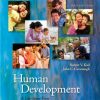
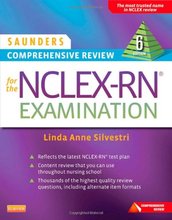

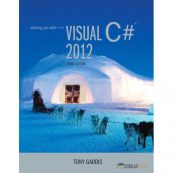
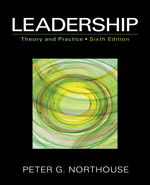

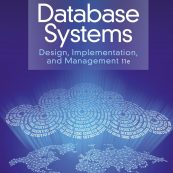


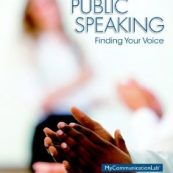

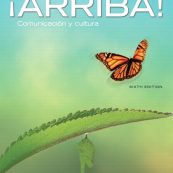
Reviews
There are no reviews yet.